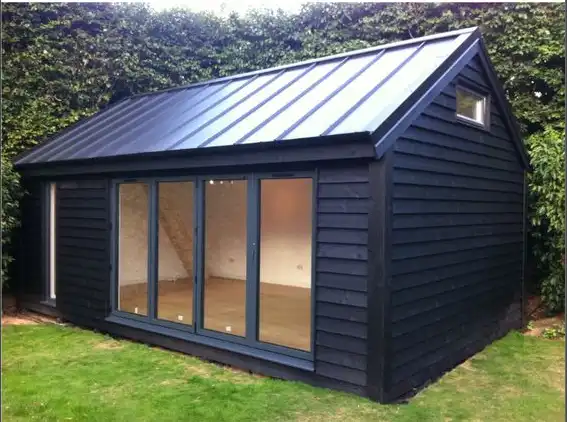The Art of Customizing Decorative Indoor Wall Panels
Decorative indoor wall panels have revolutionized interior design, offering a perfect fusion of style and functionality. These versatile solutions provide homeowners and designers with endless possibilities to transform spaces. When embarking on a custom wall panel project, it's crucial to understand the various elements that contribute to a successful design.
Exploring Design Options
The beauty of custom decorative indoor wall panels lies in their adaptability. With a wide array of colors, patterns, and textures available, you can create a truly unique look that complements your existing décor or sets the tone for an entirely new aesthetic. Consider the overall ambiance you wish to achieve – whether it's a sleek, modern feel or a warm, traditional atmosphere.
Panels can be designed to mimic natural materials like wood or stone, or feature bold, contemporary patterns. The thickness of surface materials, ranging from 0.23mm to 0.27mm, allows for intricate detailing without compromising on durability. This versatility enables you to design panels that not only look stunning but also align with your space's functional requirements.
Balancing Aesthetics and Functionality
While the visual appeal of decorative indoor wall panels is paramount, it's equally important to consider their functional aspects. These panels offer more than just aesthetic enhancement; they provide practical benefits that can significantly improve your living or working environment.
For instance, panels with a thermal conductivity of 0.018W/m.k and thermal resistance of 2.09m2k/w offer superior insulation, contributing to energy savings and improved comfort. The sound insulation properties make these panels ideal for creating quiet, peaceful spaces in both residential and commercial settings.
Moreover, with a fire-protection rating of B1/B2, these panels ensure peace of mind when it comes to safety. The low waterproof rate of 0.0008 and high wind resistance of 8.0 Kpa demonstrate their durability and ability to withstand various environmental conditions, even in challenging applications.
Technical Considerations for Optimal Performance
When designing custom decorative indoor wall panels, it's crucial to delve into the technical specifications to ensure optimal performance and longevity. Understanding these aspects will help you make informed decisions that balance visual appeal with practical functionality.
Dimensions and Material Composition
The measurements of your boards play a critical part in both aesthetics and establishment. For insides applications, boards ordinarily have a thickness of 10mm and a width of 450mm. These standardized measurements permit for simple establishment and consistent integration with existing structures.
The composition of the panels is equally important. With a compressive strength of 52.7kpa, these panels can withstand significant pressure without deformation, ensuring long-lasting durability. The variety in surface material thickness (0.23mm, 0.25mm, 0.27mm) allows for different textures and finishes, catering to diverse design preferences.
Environmental Performance
In today's eco-conscious world, the natural effect of building materials is a basic thought. Enriching indoor divider boards are outlined with maintainability in intellect. Made from recyclable materials, these boards back green building activities and contribute to a more economical development industry.
Installation and Maintenance: Ensuring Longevity
The final step in designing custom decorative indoor wall panels is considering the installation process and long-term maintenance. These factors are crucial for ensuring that your panels not only look great upon installation but continue to enhance your space for years to come.
Professional Installation
Whereas the customizable nature of these boards offers adaptability in plan, proficient establishment is key to accomplishing the best comes about. Experienced installers can guarantee that boards are appropriately adjusted, safely connected, and consistently coordinates with your existing engineering. They can also address any special challenges postured by your particular space, such as uneven surfaces or complex room formats.
During installation, attention should be paid to the panels' technical specifications. For instance, the wind resistance of 8.0 Kpa indicates that these panels can withstand significant pressure, making them suitable for various applications. However, proper installation techniques are necessary to fully leverage this feature.
Effortless Maintenance for Lasting Beauty
One of the major advantages of modern decorative indoor wall panels is their ease of maintenance. The surfaces are designed to be easily cleanable, ensuring that your panels retain their beauty with minimal effort. Regular dusting and occasional cleaning with mild soap and water are typically sufficient to keep the panels looking pristine.
The durability of these panels, as evidenced by their high compressive strength and low waterproof rate, means they can withstand daily wear and tear without showing signs of damage. This resilience translates to lower maintenance costs and fewer replacements over time, making them a cost-effective choice for long-term interior design solutions.
Conclusion
Designing custom decorative indoor wall panels is an exciting journey that allows you to create truly unique and functional spaces. By considering aesthetics, technical specifications, and practical aspects like installation and maintenance, you can develop a design that not only looks stunning but also performs exceptionally well over time. These versatile panels offer a perfect blend of style and functionality, making them an excellent choice for a wide range of interior design projects.
If you're ready to transform your space with custom decorative indoor wall panels or have any questions about the design process, we're here to help. Contact us at info@sdqsc.com to explore the possibilities and start your journey towards creating beautiful, functional interiors.
References
1. Cox, T. J., & D’Antonio, P. (2009). Acoustic Absorbers and Diffusers: Theory, Design and Application (2nd ed.). Taylor & Francis.
2. ASHRAE. (2021). ASHRAE Handbook—Fundamentals. American Society of Heating, Refrigerating and Air-Conditioning Engineers.
3. Gibson, L. J., & Ashby, M. F. (1999). Cellular Solids: Structure and Properties (2nd ed.). Cambridge University Press.
4. González, M. J., & Navarro, J. G. (2006). Assessment of the decrease of CO₂ emissions in the construction field through the selection of materials: Practical case study of three houses of low environmental impact. Building and Environment, 41(7), 902–909.
5. Yeang, K. (2008). EcoDesign: A Manual for Ecological Design. Wiley-Academy.
6. Müller, C., & Hegger, M. (2012). Energy efficiency of lightweight construction systems for office buildings. Energy and Buildings, 56, 179–186.